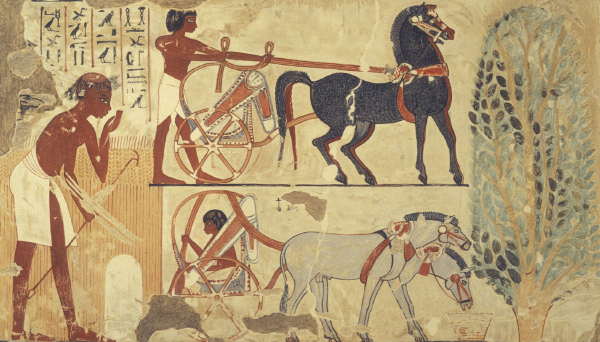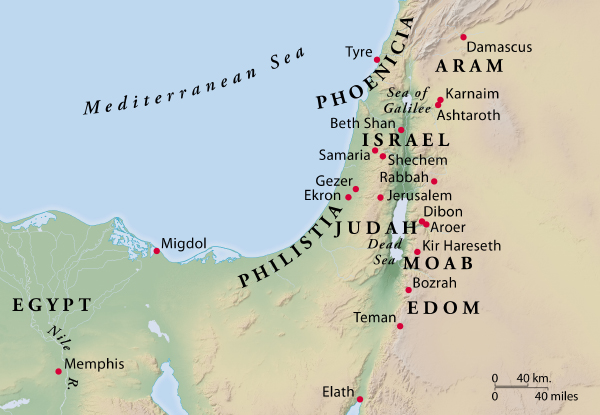Judgment against Israel (5:1–15)
In Gibeah … in Ramah … in Beth Aven; lead on, O Benjamin (5:8). The places mentioned here track from south to north, implying that Israel’s enemy is Judah. An alternative rendering to the NIV here, “behind [or after] you, Benjamin,” supports this idea, as does the mention in verse 10 of leaders from Judah. The historical setting is likely Judah’s chasing at the heels of Israel in the wake of the failure of Israel’s anti-Assyrian coalition (see the sidebar “Historical Background to Hosea 5:8–7:16”). (The NIV’s “lead on, O Benjamin” is intelligible as a possible war cry; cf. “take captive your captives, O son of Abinoam!” and “march on, my soul, be strong!” in Judg. 5:12, 21 respectively.)
Judah’s leaders are like those who move boundary stones (5:10). Capitalizing on Judah’s enlistment of Assyria to help repel Israel, disrespectful Judeans may have tampered with boundary stones (see Deut. 19:14; 27:17; Job 24:2; Prov. 23:10). This was not so much an affront to the government as it was to families whose land was understood to be an inheritance from Yahweh.46 The Egyptian proverbial Teachings of Amenemope (ca. 1200 B.C.) echoes a similar concern:
Do not topple the markers on the boundaries of a field,
Or your conscience will destroy you.
To please the pharaoh, our divine ruler,
Observe the borders of your neighbors’ fields.47

Boundary stone being set up
Z. Radovan/www.BibleLandPictures.com
Great king (5:13). The NIV differs from the Hebrew text, which reads “king (of) Yareb” (Heb. melek yārēb). It differs because there is no known king or place with this name and because the word order is backwards for a king’s name. The NIV option, differing only with the traditional vocalization of the Hebrew letters and not the letters themselves, arises because the expression occurs in parallelism with “the king of Assyria.” Moreover “great king” finds warrant from the Assyrian language itself, which has an expression šarru rabû, meaning “great king,” which, when translated into the Hebrew language, would have consonants similar to what we have in the Hebrew text (mlk[y] rb) (except for the word division and previously mentioned vocalization tradition). The interpretation of the NIV finds support from an Aramaic text that similarly transfers this common Assyrian expression into its own language.48
